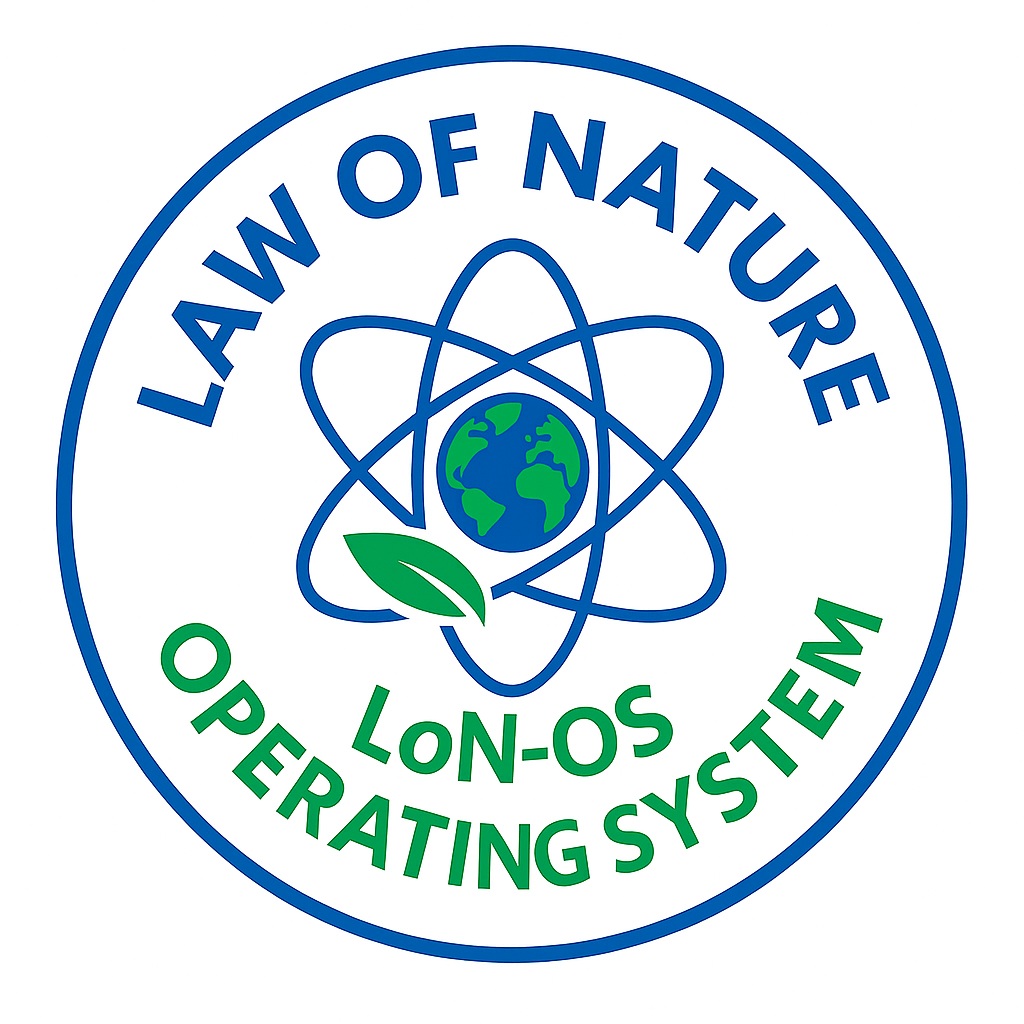12 Laws of Nature

For what qualifies as a Law of Nature — and why humankind can no longer afford to neglect the following Laws of Nature — please see the Nature and Root Cause sections on the homepage
Our Selection Criteria for the Laws of Nature Listed Below
The following Laws of Nature are expected to be relevant to:
Decision-makers
Experts
Stakeholders
Partners
Collaborators
Beneficiaries
Laws of Nature
Law of Nature
When a Tipping Point is crossed, something fundamental changes
Experiences, Examples and Add-ons
Missing this law prevented us from applying various Laws of Nature from physics, engineering, chemistry, mathematics and the like when a first level of complexity was crossed.
This became a standard situation in fields supposed to resolve the colossal problems we face now.
Alternative expressions for Tipping Points are
Possibilities
Laws of Nature from physics, engineering mathematics, chemistry and the like becoming executable beyond the Level-1 Tipping Point of complexity
Enabling solution seekers in societal, managerial, organizational and health areas to identify and apply Laws of Nature beyond the Level-1 Tipping Point of complexity
Law of Nature
When the demand for a resource exceeds its capacity, a tipping point is crossed. Queues build up.
Experiences, Examples and Add-ons
Missing this law beyond the Level 1 Tipping Point of complexity prevented us from recognizing overloaded agendas and information, waiting lists, bureaucratic processes and much more as capacity bottlenecks.
Practices working well before this Tipping Point turned into practices worsening these bottlenecks for 2+ decades.
Available practices
See Manifesto Tutorial 2
Possibilities
Applying this law when the bottleneck cannot be calculated mathematically
Recognizing, reducing and/or solving hidden capacity bottlenecks with reliable practices like natural process flows and a simple policy people can remember and apply
For more information, see Manifesto Tutorials 3.2 and 3.3
Law of Nature
Nature thrives when the environment is healthy
Over time and even with disturbances like meteors and viruses, Nature develops towards healthy and balanced systems
Experiences, Examples and Add-ons
The environments, organizations and systems we live and work in are all part of Nature
The health of
Possibilities
Closing a structural gap in decision-making processes
That is the gap where exact practices like those of mathematics fail as they cannot create reliable outcomes. This is typically the case for situations beyond the Level 1 Tipping Point of complexity.
Law of Nature
Survival level 1
Survival of the fittest (Darwin) or
Survival by natural selection (Herbert Spencer, used by Darwin as well)
Survival level 2
Survival by merit and intelligence
Survival level 3
Survival by intelligence being in harmony with Nature
Experiences, Examples and Add-ons
In recent years, Darwin and his survival law have been criticized. We believe this is partially due to missing the Tipping Point Law of Nature. It allows us to add survival levels 2 and 3.
Tipping Point from Survival level 1 to 2:
When intelligence led to the ability to create tools and the tools changed our environments via building houses and early farming
Tipping Point from Survival level 2 to 3:
When intelligence achieves harmony with Nature
Right now, humanity is at the crossroad where it is forced to decide which path to take:
The path of denying the existential threats
Moving on to Survival Level 3
Possibilities
Moving huge funds and resources away from further fueling the colossal problems we face and to enabling Survival Level 2
By:
Law of Nature
Integrity: Without it nothing works1
People, objects (organisations, products, services, etc.), and systems are IN or OUT of INTEGRITY.3
Experiences, Examples and Add-ons X


We call the associated practice Adaptive IntegrityTM
Integrity, when examined through the lenses of circularity, context, choice, action, and relationality, emerges as a dynamic and interconnected concept. This perspective moves beyond viewing integrity as a static personal virtue, instead framing it as an ongoing, relational practice that aligns individual actions with the well-being of broader systems.
Integrity therefore is not a matter of morality or ethics alone1:
How Adaptive Integrity works
1.
In today’s world — environments can and do change quicker than promises, commitments and the like can be delivered.
2.
We give our word — a promise, commitment, contract — when we have sufficient confidence that we can keep our word. As soon as we know that we cannot keep our word: 1, 2
3.
Adaptive Integrity goes hand in hand with the Core Human Values and Essential Behaviours we have identified. It is an Essential Behaviour as well.
The scientific foundation: A Law of Nature identified
Integrity has been identified as a Law of Nature by one of the most cited economists of all time4: Prof. Michael C. Jensen, in co-creation with Werner Erhard and Steve Zaffron (see abstract1).
Jensen is widely known as a key originator of Agency Theory, a concept that contributed to decades of misaligned incentives and the erosion of trust in organisations.
Later, he did something rare but essential — both to address the damage his earlier theory had created and to help solve today’s complex problems:
He took personal responsibility for the unintended consequences of his earlier work through developing and teaching two executable solution possibilities with the potential for highest impact at the lowest costs and risks:
While many experts call for paradigm shifts, Jensen actually went through one himself — and created two foundations to enable paradigm shifts:
Observed characteristics of Jensen’s personal paradigm shift—before this Manifesto was developed

Jensen went straight to the system level

He stepped out of the box (when he realized current methods were insufficient)

He searched for simple rules at the system level

He created a verbal Law of Nature (this integrity law1), like Darwin did and Newton (Third Law of Motion: For every action, there is an equal and opposite reaction)

Jensen switched from exact practices to open practices beyond the Level-1 Tipping Point of complexity: i.e. this Integrity Law and the class

He intervened where the highest impact can be made at the lowest costs and risks at the system level: This Law of Nature, and a class that opens mental blockades of the unconscious mind5

The class was designed for situations beyond the Tipping Point where it becomes executable (opening mental blockades), and scalable (given in multiple countries3, 5, 6).
x
Durability at system level was missed, because the gaps addressed by this Manifesto were unknow at the time.
References
1 Integrity: Without it Nothing Works. Jensen, Michael C., Harvard Business School. Jesse Isidor Straus Professor of Business Administration, Emeritus. April 6, 2014. https://ssrn.com/abstract=1511274
2 Adjustments made to meet communication and executability needs
3 Seminar by Michael C. Jensen, Erasmus University, Rotterdam. 2011.
4 Michael C. Jensen. Wikipedia. June 12, 2025.
5 Sands Leadership Lecture Series: Being A Leader And The Effective Exercise Of Leadership. Michael C. Jensen, Werner Erhard. 2014. Video: https://www.youtube.com/watch?v=sVRAMb2kP6o
6 Being A Leader And The Effective Exercise Of Leadership given at Rotterdam, 2011. Full class. Prof. Richard De Mulder (retired), Helen Gubby.
Possibilities
The example of an influential scientist taking on the responsibity to solve critical gaps in our long-standing but failed solutions attempts: Michael C. Jensen!
Law of Nature
In Nature, there is no indefinite growth
Experiences, Examples and Add-ons
Our economic systems are based on
and demonstrate increasing patterns of Darwin’s Survival Level 1 only
A Level-1 Tipping Point was crossed when the resources we consumed started to exceed what our planet can recreate
With droughts, increasingly violent protests, divided populations and war spreading, we are at the Level 2 Tipping Point of complexity
Possibilities
An economic system based on being in harmony with Nature
By this model:
Law of Nature
Breaking challenges into parts works well when
are understood and addressed accordingly.
When complex problems are broken into parts, they cannot be understood to the level required to solve the whole of a complex problem
Specifically problems involving situations or environments beyond the Level 1 Tipping Point of complexity
Experiences, Examples and Add-ons
A living being cannot be divided into its parts, put together again, and expected to be alive again
The same or something close applies when the environment or problem is beyond the Level-1 Tipping Point of complexity
Complexity as experienced by people in the middle of a complex environment:
Possibilities
Solving many if not most complex problems by switching to
Various wicked problems becoming solvable
Creating highly effective solutions and far-reaching spin-off effects by making break-into-parts and the Manifesto’s system approach complement each other
Example: The Law of Nature Manifesto
Law of Nature
When a problem or challenge is complex, the effective solution may need to be amazingly simple. However, a package of (simple) solutions complementing each other may be required.
The package must be designed to get over the Tipping Point where it becomes practical, executable and durable.
A simplification activity in a box easily creates more damage at the system level than the simplification’s value inside the box.
Experiences, Examples and Add-ons
Examples of simple solutions versus standard practices
With simplification pressures, people inside the box argue “We focus on what matters to our box or on what is proven”. Consequences observed:
Possibilities
Creating system-wide simplification by way of the Einstein-Newton-Darwin practices and the Manifesto
Law of Nature
For every action, there is an equal and opposite reaction
Complexity Extension
When the Level-1 Tipping Point of complexity is crossed, anything can happen (positive or negative).
The opposite reaction may differ, including: not being opposite, or being weaker, stronger, absent altogether or increasing in magnitude.
It may take time for the reaction to unfold.
Experiences, Examples and Add-ons
The propulsion of the rocket takes place by burning fuel. This creates a push on the front of the rocket, generating an equal and opposite push on the exhaust gas backwards (Source: NASA’s Glenn Research Center)
In organizations and society, we are bombarded by information, bureaucracy and complexity demanding high levels of energy to process and respond. We experience how practices and actions that worked well earlier now fuel opposite reactions like lack of interest, opposition, violent protest, divided populations and conflict. Sadly, we have lost the ability to build the ‘rocket’ that works for complex matters
Possibilities
A ‘rocket-like’ approach that responds to the negative and positive outcomes with equal focus to incrementally solve situational challenges
Examples
Law of Nature
An “attractor” is a unifying trend to which a dynamic system evolves over time and then stays there, regardless of any outside disturbance
Source: Wikipedia, Dutch Version
Experiences, Examples and Add-ons
From the perspective of solving complex problems with countless disturbances created across the globe1, we observe the following patterns:
1 Marginal improvements, in-the-box solutions, movements, ‘follow the science’ while science-based solutions are too many years away or others may have effective solutions, and so forth
Possibilities
Choosing to be in unity with Nature is a powerful attractor to move us away from problem-fueling into problem-solving activities, decisions and projects
By starting from the Laws of Nature providing the high-to-highest impact at the lowest costs and risks
Law of Nature
In Nature, there is an indefinite number of possibilities as to how life can develop
Extension:
Since the colossal problems we have created are part of Nature, countless solution possibilities can be expected to surface
Experiences, Examples and Add-ons
Sadly, the systems we created and fixed ways of thinking prevent us from exploring the high and highest-impact solution possibilities available today.
Possibilities
Unleashing the solution possibilities by
Including
Law of Nature
Information in a system is infinite. The abilities to access information and make sense of it are limited.
Experiences, Examples and Add-ons
We have countless tools to share and access information. However, …
When people need to make decisions or do their jobs, the following patterns emerged as standard situations in medium and large organizations and beyond:
Consequences
Possibilities
Agile yet reliable decision-making at all levels
Guided Self-Organization: As much guidance and direction as needed, as little as possible to act as a single entity
Created by human and digital systems providing
Reduced domain-specific skill shortages
Through skilled people being freed from the burdens of
And much more
Given that the practices which could solve this have been lost, and we could not find (agile) movements making this matter a priority: